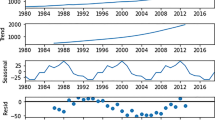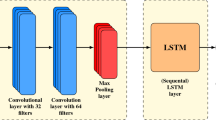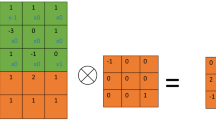Abstract
Accurate electrical demand forecasting is essential for power system efficiency, renewable energy investment, and cost-effective electricity production. For electrical demand consumption time series forecasting, this article proposes a novel deep learning architecture, wavelet transform and correlation-based hybrid LSTM-GCNN, that integrates long short-term memory (LSTM) and graph convolutional neural network (GCNN) layers. A GCNN captures dynamically distributed features and temporal correlations from graph data generated by wavelet decomposition and correlation analysis. The temporal patterns of the electrical demand consumption time series are captured by an LSTM. The proposed hybrid LSTM-GCNN architecture is evaluated using Indian Northern Regional Load Despatch Centre (NRLDC) electrical demand consumption data from 2018–2021 with a 15-min resolution of states Uttar Pradesh (U.P.) and Jammu and Kashmir (J &K). Hybrid LSTM-GCNN outperforms ARIMA, LSTM-univariate, LSTM-convolutional neural network and LSTM-multivariate prediction algorithms in universality, reliability, and accuracy. The proposed hybrid LSTM-GCNN architecture offers an efficient and promising method for forecasting time series of electrical demand consumption.



















Similar content being viewed by others
Availability of data and materials
Not applicable
References
Ghalehkhondabi I, Ardjmand E, Weckman RG, Young WA. An overview of energy demand forecasting methods published in 2005–2015. Energy Syst. 2017. https://doi.org/10.1007/s12667-016-0203-y.
López JC, Rider MJ, Qiuwei W. Parsimonious short-term load forecasting for optimal operation planning of electrical distribution systems. IEEE Trans Power Syst. 2019. https://doi.org/10.1109/TPWRS.2018.2872388.
Conejo AJ, Plazas MA, Espinola R, Molina AB. Day-ahead electricity price forecasting using the wavelet transform and ARIMA models. IEEE Trans Power Syst. 2005. https://doi.org/10.1109/TPWRS.2005.846054.
Jónsson T, Pinson P, Nielsen AH, Madsen H. Exponential smoothing approaches for prediction in real-time electricity markets. Energies. 2014. https://doi.org/10.3390/en7063710.
Almazrouee IA, Almeshal MA, Almutairi SA, Alenezi RM, Alhajeri NS. Long-term forecasting of electrical loads in Kuwait using prophet and holt-winters models. Appl Sci. 2020. https://doi.org/10.3390/app10165627.
Rawal K, Feature Ahmad A. Selection for electrical demand forecasting and analysis of pearson coefficient. In: IEEE 4th International Electrical and Energy Conference (CIEEC), Wuhan. China IEEE. 2021;2021. https://doi.org/10.1109/CIEEC50170.2021.9510614.
Arunan A, Qin Y, Li X, Yuen C. A federated learning-based industrial health prognostics for heterogeneous edge devices using matched feature extraction. IEEE Trans Autom Sci Eng. 2023. https://doi.org/10.1109/TASE.2023.3274648.
Rawal K, Ahmad A. A comparative analysis of supervised machine learning algorithms for electricity demand forecasting. In: 2022 Second International Conference on Power, Control and Computing Technologies (ICPC2T). IEEE. 2022. https://doi.org/10.1109/ICPC2T53885.2022.9776960
Román-Portabales A, López-Nores M, Pazos-Arias JJ. Systematic review of electricity demand forecast using ANN-based machine learning algorithms. Sensors. 2021. https://doi.org/10.3390/s21134544.
Chen G, Hu Q, Wang J, Wang X, Zhu Y. Machine-learning-based electric power forecasting. Sustainability. 2023. https://doi.org/10.3390/su151411299.
Park S, Jung S, Lee J, Hur J. A short-term forecasting of wind power outputs based on gradient boosting regression tree algorithms. Energies. 2023. https://doi.org/10.3390/en16031132.
Srivastava AK, Pandey AS, Houran MA, Kumar V, Kumar D, Tripathi SM, et al. A day-ahead short-term load forecasting using M5P machine learning algorithm along with elitist genetic algorithm (EGA) and random forest-based hybrid feature selection. Energies. 2023. https://doi.org/10.3390/en16020867
Rao C, Zhang Y, Wen J, Xiao X, Goh M. Energy demand forecasting in China: a support vector regression-compositional data second exponential smoothing model. Energy. 2023. https://doi.org/10.1016/j.energy.2022.125955.
Wang D, Gan J, Mao J, Chen F, Yu L. Forecasting power demand in China with a CNN-LSTM model including multimodal information. Energy. 2023. https://doi.org/10.1016/j.energy.2022.126012.
Zhou K, Qin Y, Yuen C. Lithium-ion battery state of health estimation by matrix profile empowered online knee onset identification. IEEE Trans Transp Electrificat. 2023. https://doi.org/10.1109/TTE.2023.3265981.
Wu Z, Pan S, Chen F, Long G, Zhang C, Yu SP. A comprehensive survey on graph neural networks. IEEE Trans Neural Netw Learn Syst. 2020. https://doi.org/10.1109/ACCESS.2022.3191784.
Huang N, Wang S, Wang S, Cai G, Liu Y, Dai Q. Gated spatial-temporal graph neural network based short-term load forecasting for wide-area multiple buses. Int J Electr Power Energy Syst. 2023. https://doi.org/10.1016/j.ijepes.2022.108651.
Xu K, Hu W, Leskovec W, Jegelka S. How powerful are graph neural networks? 2018.https://doi.org/10.48550/arXiv.1810.00826. arXiv:1810.00826.
Zhang S, Tong H, Xu J, Maciejewski R. Graph convolutional networks: a comprehensive review. Comput Soc Netw. 2019. https://doi.org/10.1186/s40649-019-0069-y.
Velickovic P, Cucurull G, Casanova A, Romero A, Lio P, Bengio Y. Graph attention networks. stat.ML. 2017. https://doi.org/10.48550/arXiv.1710.10903
Acknowledgements
Authors acknowledge the institute fellowship received by the corresponding author during the PhD program offered by Department of Higher Education, Ministry of Education, Government of India.
Funding
This paper received no funding from any agency for the research, authorship, and/or publication.
Author information
Authors and Affiliations
Contributions
Keerti Rawal: conceptualization, data curation, formal analysis, investigation, methodology, software, visualization, writing—original draft, Aijaz Ahmad: conceptualization, project administration, resources, supervision, validation, visualization, writing—review and editing.
Corresponding author
Ethics declarations
Conflict of interest of Potential Conflict of interest
On behalf of all authors, the corresponding author declare that they have no conflicts of interest. The authors declare that they have no known competing financial interests or personal relationships that could have appeared to influence the work reported in this paper.
Ethics approval
This article does not contain any studies with human participants or animals performed by any of the authors.
Consent to participate
Not applicable.
Consent for publication
Not applicable.
Code availability
Not applicable.
Additional information
Publisher's Note
Springer Nature remains neutral with regard to jurisdictional claims in published maps and institutional affiliations.
Rights and permissions
Springer Nature or its licensor (e.g. a society or other partner) holds exclusive rights to this article under a publishing agreement with the author(s) or other rightsholder(s); author self-archiving of the accepted manuscript version of this article is solely governed by the terms of such publishing agreement and applicable law.
About this article
Cite this article
Rawal, K., Ahmad, A. Hybrid LSTM-Graph Convolutional Neural Network with Wavelet Transform and Correlation Analysis for Electrical Demand Forecasting. SN COMPUT. SCI. 5, 412 (2024). https://doi.org/10.1007/s42979-024-02765-w
Received:
Accepted:
Published:
DOI: https://doi.org/10.1007/s42979-024-02765-w




